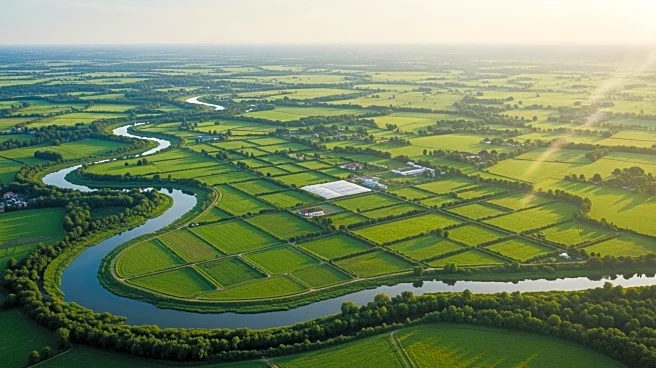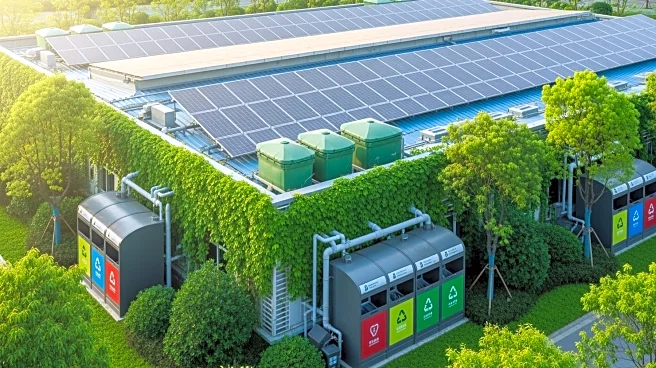What's Happening?
Ganzhou City, located in the southern part of Jiangxi Province, China, has been the focus of a study analyzing the coordination of production, living, and ecological spaces from 2000 to 2020. The study divides
the city into 10 km grid cells to evaluate land use patterns and their functional interactions. Using a multi-factor weighted summation method, the study calculates functional scores for production, living, and ecological land use within each grid cell. The research employs a ternary coupling coordination model to assess the degree of interaction and synergy among these spaces, revealing whether they develop harmoniously or exhibit imbalances. The study aims to provide insights into the spatial and functional dynamics of these spaces, particularly as they evolve in response to urban expansion and environmental conservation efforts.
Why It's Important?
The findings of this study are significant as they underscore the need for integrated and spatially explicit land use planning in rapidly developing regions like Ganzhou. As urbanization and industrialization continue to encroach on ecological spaces, understanding the coordination between production, living, and ecological functions becomes crucial for sustainable development. The study's methodology and results can inform policy recommendations tailored to the distinct characteristics of different areas, balancing urban development, industrial growth, and ecological preservation. This approach is vital for regions facing similar challenges, as it provides a framework for evaluating and improving the coordination of land use functions to support sustainable regional development.
What's Next?
The study suggests that policy recommendations should be tailored to the distinct coordination characteristics of different areas within Ganzhou City. For core urban areas, the focus should be on optimizing coordination by embedding green infrastructure and promoting compact urban development. In peripheral areas with high ecological value, policies should prioritize strict ecological protection and potentially develop compatible livelihoods like sustainable forestry or eco-tourism. These strategies aim to enhance the connectivity between urban green spaces and mitigate the negative impacts of high production and living density on ecological functions.
Beyond the Headlines
The study highlights the importance of balancing urban development with ecological preservation, a challenge faced by many rapidly developing regions worldwide. By employing a systematic approach to evaluate land use coordination, the research provides a model that can be adapted to other regions with similar developmental pressures. The study also emphasizes the role of policy in shaping sustainable development outcomes, suggesting that tailored strategies can effectively address the unique challenges of different areas.











